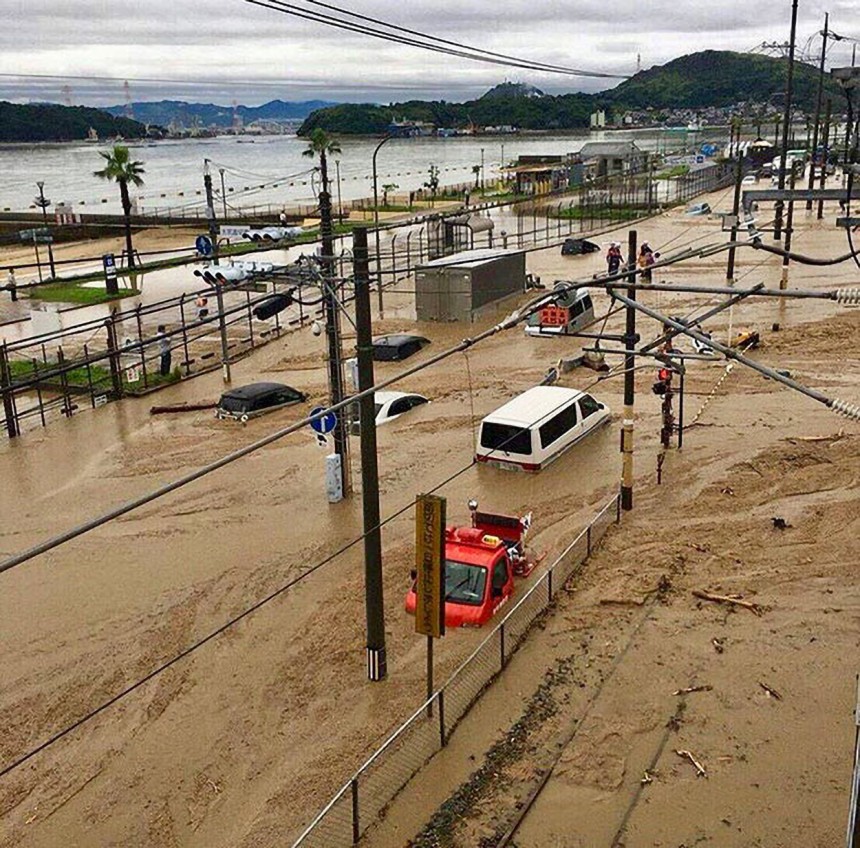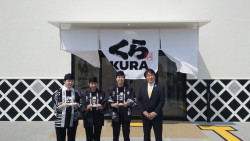
August 6, 2018
West Japan’s Flooding Disaster
Here’s how you can contribute to the relief efforts
Given the disaster in Japan this past month, which has killed over 200 people and displaced tens of thousands, I would like to provide tips about supporting local organizations as well as introduce some of the professional humanitarian organizations responding to the disaster. I’m including organizations that have information, websites and donation portals in English.
After this column is written, more specific information about the devastation due to extreme flooding and landslides across southwest Japan will undoubtedly come out. Hence much of the information here is general and may be applicable to other disasters as well. By the time this column is printed the organizations below may be calling out for volunteers, but I would advise everyone to wait until specific requests are publicized.
General tips about giving:
- Be an educated donor. Know what is being asked and what the needs of the community are.
- Do not make assumptions that your money is going to the field unless you give directly to an organization working in the field on that specific disaster.
- Ask where your money is going. It’s okay to ask. This is being responsible and making an educated choice.
- Understand that circumstances change. The nature of organizations’ work will change as the weather, socio-political, economic and recovery conditions evolve, so know that the use of your donations will also need to change.
Types of donations and finding the right place for your money:
There are many different ways to donate. In the emergency phase — just after a disaster impacts a community — I suggest giving directly to groups that are already active in the region.
1. Give directly to the groups doing work on the ground
These groups do the actual work and need money ASAP after a crisis. I usually suggest starting here because time and money are of the essence.
- AARJapan (Association for Aid and Relief, Japan) focuses on those most in need, in particular the elderly and persons with disabilities.
- Peace Boat Disaster Volunteer Center has set up a fund, as well as an English-language page with updates. They completed a rapid needs assessment and began implementing a response to support survivors, in collaboration with local community and government groups.
- Peace Winds Japan (PWJ) Civic-Force and Asia Pacific Alliance for Disaster Management Japan (A-PAD Japan) have formed a joint emergency relief team. Besides their focus on basic necessities, they are specializing in health care services.
- Second Harvest Japan is supplying food to organizations providing direct assistance to those affected by the flooding. They will continue to work with partners to provide the right aid at the right time. Based on their experience in Tohoku and Kumamoto, sending care packages to displaced families, they know where the need is in collaboration with their partners. Find out more about how you can support their work through the donation of food or cash at their website.
A complete list of groups responding to the floods in Western Japan can be found on the JANIC homepage in Japanese:
2. Giving to a network organization that distributes funds
When you give to a network organization your money usually goes to a number of organizations and covers an array of needs depending on the priorities of the network. Japan Platform, the network of humanitarian relief organizations in Japan, has set up a fund for their member organizations working in the region at
3. Giving to an online funding hub
On fundraising websites you can often earmark the donation for a specific organization or cause. However, the distribution of funds to the organizations on the ground can be rapid or take months — it varies from website to website. On international sites, people overseas (US, UK or Canada in particular) can also receive tax benefits. For example, Global Giving is an online platform connecting nonprofits, donors and companies. They also help local nonprofits access the funding, tools, training and support they need to become more effective.
4. Giving to a general disaster fund or donation boxes
You may see a donation box in your local supermarket, but where does the money actually go? If “ABC Earthquake” is the only thing written on the donation box, ask someone for more specific information. If they laugh when you ask or have no answer, I suggest you give somewhere else. Keep in mind that when you give to a general fund you have no control over where it goes or how the funds will be used.
5. Corporate funds
Some companies set up matching funds or run giving campaigns in times of disaster. For example, footwear brand KEEN Japan is building a ¥10 million matching disaster relief fund to support local groups. If your company is from the US or Canada, the headquarters may decide to go through a funding advisor such as Give2Asia to both give and receive tax benefits.
.jpg)
Program Manager at AAR Japan
Expert advice on how to donate
Here are excerpts from an online discussion I recently had with a specialist in humanitarian and disaster response, Go Igarashi, Program Manager at AAR Japan.
Sarajean Rossito: Can you tell me what the needs are right now – based on what you know?
Go Igarashi: I cannot tell you the specific material needs right now as we are still (as of mid-July) conducting the assessments. The situation is still very changeable.
SJ: Well, the impact is very spread out isn’t it, 15 prefectures and many small towns or villages, right? Are many groups responding?
GI: Yes it is, so access can be an issue. There are, at least, 12 Japan Platform (JPF) member NGOs, including AARJapan involved right now. They will be in Okayama, Hiroshima or Ehime prefectures to start.
SJ: Based on your experience can you tell me what the needs are likely to be?
GI: Generally speaking from my experience, the immediate needs after life-saving rescue will be hygiene kits and tools for cleaning up.
The need for food is highlighted in the media and likely to be met soon. As soon as infrastructure is restored, food and water should be delivered very quickly. Needs for food in some places will be higher, particular where they have limited access. I expect that hygiene kits (such as soap, alcohol to kill germs, and towels), cleaning materials and tools (brooms, portable power cleaners, and high pressure washing tools) will be highly needed in the next stage. As for clothing, we expect that need to be filled rather quickly, so we aren’t asking for clothing at this time.
Apart from material needs, psychological support and counseling will be needed for the children and adults, women and men who have been affected. This psychological support does not necessarily mean a specialist’s counseling is needed, but it includes creating child-friendly spaces and places for social gatherings so that people feel connected with others both inside and outside their communities.
The specific needs for specific populations will become clearer as we reach out and access more people, meaning the needs of persons with disabilities, elderly, children, pregnant women, and people with chronic diseases. As aid workers, we need to go and research deeper into communities and welfare facilities to identify their specific needs.
SR: As we understand the daily needs more clearly we need to find other issues as well. What might these include?}
GI: The need for education support will be there, but it’s limited since summer holidays will come soon. However, those who were planning to go to cram school for entrance exams will need support. Also legal advisers, such as solicitors or financial planners will be needed after a couple of weeks, I’d expect.
SR: Many people are asking me what to give, I suggest not sending “stuff,” but giving cash right now. Should people be sending donations of goods at all?
GI: It’s not a question of need vs. no need. I have already heard from the ground that there is an influx of some relief items to local government offices. Some warehouses are beyond their capacity while other places greatly lack material goods. There are gaps.
SR: So the issue is matching the needs of the specific population of people to a specific place. I remember during the Joetsu earthquake stories of people sending goods to various city halls and post offices. And in 2011 some city halls could not distribute items. What do you suggest?
GI: I suggest this to the readers of your column who want to send relief goods rather than cash: consider who needs what. Also, who will get the items and how will they be delivered. They must make sure their relief items will go into the hands of people in need.
SR: This is why groups ask for specific items, right?
GI: Right, otherwise it may disturb relief operations.
SR: Thank you, Go. I hope that people can understand the need to donate money instead.







